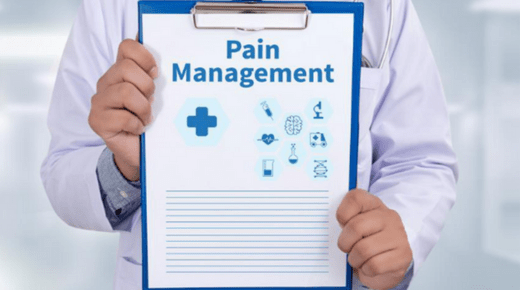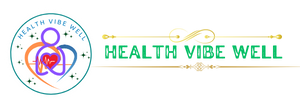Health
First Visit to Pain Management – What Happens?

Visiting a pain management clinic for the first time can be both a hopeful and uncertain experience. Whether you’re dealing with chronic pain from a long-term condition or experiencing discomfort due to an injury, understanding what happens during your initial visit to Florida Medical Pain Management will help ease any concerns you may have.
Initial Consultation
Your first appointment will begin with a comprehensive consultation. This involves discussing your medical history, current symptoms, and previous treatments. The specialists at Florida Medical Pain Management take the time to understand your unique pain experience and how it impacts your daily life. Be prepared to provide information about the intensity, frequency, and location of your pain, as well as any medications or therapies you’ve tried.
Physical Examination
A physical examination is typically conducted to assess your range of motion, reflexes, and areas of tenderness. This step is crucial for identifying any underlying issues that could be contributing to your pain. Pain management specialists are trained to observe signs that may not be immediately obvious, helping them create an accurate diagnosis.
Diagnostic Testing
Depending on your condition, additional diagnostic tests may be recommended to pinpoint the source of your pain. These can include X-rays, MRIs, or blood tests. At Florida Medical Pain Management, cutting-edge diagnostic tools are used to gain detailed insights into musculoskeletal issues, nerve damage, or other conditions causing pain. The results of these tests will guide the development of a tailored treatment plan.
Personalized Treatment Plan
Once the evaluation is complete, the specialist will work with you to create a personalized pain management plan. This can involve a variety of approaches such as physical therapy, medications, injections, or more advanced treatments like nerve blocks or regenerative medicine. Florida Medical Pain Management takes a comprehensive approach, focusing on not only relieving pain but also improving your quality of life.
Education and Support
Before leaving, your care team will provide you with information about your diagnosis and explain your treatment options in detail. You’ll be encouraged to ask questions and discuss any concerns. Understanding your treatment plan is essential for your active participation in managing your pain.
Follow-Up Care
Pain management is an ongoing process, and follow-up visits are essential to monitor progress and adjust your treatment as necessary. Florida Medical Pain Management will schedule regular check-ins to ensure you are achieving the best possible outcomes.
By addressing your concerns and offering a personalized treatment approach, Florida Medical Pain Management is committed to helping you take control of your pain and restore your well-being.
A medical professional wrote this article at Florida Medical Pain Management. Florida Medical Pain Management is proud to offer comprehensive pain management services to a diverse group of patients. Patients at Florida Medical Pain Management can get help managing hip, knee, leg, and neck pain. The practice also offers comprehensive arthritis management, along with treatments for auto accidents, sports, and work injuries as well as ketamine infusion therapy.
Health
Medical Oncology Hospital in India & Expert Medical Oncologists
India has emerged as a global hub for high-quality and affordable cancer treatment, with medical oncology at the forefront. Medical oncology is a vital branch of cancer care, focusing on the diagnosis, treatment, and management of cancer using chemotherapy, immunotherapy, targeted therapy, and hormone therapy. With advancements in technology, the availability of skilled professionals, and world-class infrastructure, the Medical Oncology Hospital in India sector has gained immense recognition from patients across the globe.
Understanding Medical Oncology
Medical oncology is one of the three primary disciplines in cancer treatment, alongside surgical oncology and radiation oncology. A medical oncologist is the physician who coordinates a patient’s cancer care, recommending systemic treatments based on the type, stage, and molecular profile of the tumor.
These specialists work closely with pathologists, radiologists, surgeons, and radiation oncologists to formulate personalized treatment plans. From administering chemotherapy to managing side effects and conducting follow-ups, they play a pivotal role in the patient’s journey.
Top Medical Oncology Hospitals in India
India is home to some of the best medical oncology hospitals that provide comprehensive cancer care. These institutions are equipped with state-of-the-art technologies such as PET-CT, linear accelerators, bone marrow transplant units, and robotic surgical systems. Some of the leading hospitals include:
- Tata Memorial Hospital, Mumbai – A pioneer in cancer research and treatment, offering affordable care and advanced therapies.
- AIIMS, New Delhi – Known for its expert faculty and cutting-edge cancer treatments.
- Apollo Cancer Centre, Chennai & Hyderabad – Offers a multi-disciplinary approach with a dedicated medical oncology department.
- Max Super Specialty Hospitals – Provides precision oncology and access to global clinical trials.
- Fortis Memorial Research Institute, Gurgaon – Equipped with next-gen diagnostic and treatment facilities.
These centers not only attract patients from within the country but also from abroad, owing to their reputation for excellence, affordability, and compassionate care.
Role of a Medical Oncologist in India
A Medical Oncologist in India is trained to understand the biology of cancer and the latest advancements in oncology research. Their primary responsibilities include:
- Diagnosing cancer through biopsies, scans, and blood tests.
- Staging the disease and determining the extent of spread.
- Designing an individualized treatment plan that may include chemotherapy, immunotherapy, or targeted therapy.
- Managing side effects and improving quality of life.
- Monitoring patients during remission and ensuring timely follow-ups.
Indian medical oncologists are often trained in premier institutions and many hold international fellowships, making them globally competitive. Many hospitals also have tumor boards where a group of experts jointly decide on the best course of action for each patient.
Why Choose India for Medical Oncology Treatment?
India offers several advantages for patients seeking cancer treatment:
- Cost-effective care: Cancer treatment in India is significantly more affordable compared to Western countries, without compromising quality.
- Internationally trained specialists: Oncologists in India are highly experienced and many have trained at top global institutions.
- Advanced infrastructure: Indian hospitals are equipped with modern technology for diagnosis, treatment, and research.
- English-speaking medical staff: Ensures seamless communication for international patients.
- Shorter waiting times: Quick access to treatment can be crucial in managing cancer effectively.
Innovation and Research
India is also making strides in clinical research and trials in medical oncology. Hospitals collaborate with global pharmaceutical companies and research institutes to test new drugs, targeted therapies, and precision medicine approaches. This gives patients access to innovative treatments that may not be available elsewhere.
Conclusion
The field of medical oncology in India is witnessing rapid growth, driven by technological innovation, expert physicians, and world-class hospital infrastructure. Whether you’re looking for preventive oncology, early-stage diagnosis, or complex cancer management, India offers reliable and compassionate care tailored to each patient’s unique needs. Choosing a reputed Medical Oncology Hospital in India and consulting a skilled Medical Oncologist in India can make a significant difference in the outcome and quality of life of a cancer patient.
Health
Top Nephrology Hospital in Hyderabad: Expert Kidney Care You Can Trust
When it comes to kidney health, choosing the right hospital is critical. Hyderabad, known for its advanced medical infrastructure, is home to several reputed nephrology hospitals that offer world-class care to patients suffering from kidney diseases. Whether you’re looking for dialysis, kidney transplant services, or treatment for chronic kidney conditions, Hyderabad has established itself as a hub for comprehensive nephrology services.
Understanding Nephrology and Its Importance
Nephrology is the branch of medicine focused on the diagnosis and treatment of kidney-related disorders. The kidneys play a vital role in filtering waste from the body, maintaining fluid and electrolyte balance, and regulating blood pressure. Any malfunction can lead to serious health complications, including chronic kidney disease (CKD), kidney failure, and even cardiovascular problems.
Early diagnosis and timely medical intervention can help manage most kidney disorders effectively. That’s why it’s essential to consult specialists at aNephrology Hospital in hyderabad with the latest technology, experienced professionals, and a proven track record.
Why Hyderabad for Nephrology Treatment?
Hyderabad offers a unique combination of affordability and high-quality medical care. Many nephrology hospitals in the city are equipped with state-of-the-art equipment, highly trained nephrologists, and round-the-clock dialysis support. These hospitals cater not only to patients from India but also from abroad, thanks to their international patient support services.
Hyderabad’s nephrology centers are also known for their multidisciplinary approach, often combining the efforts of nephrologists, urologists, transplant surgeons, dietitians, and counselors to provide holistic kidney care.
Facilities Offered by the Best Nephrology Hospitals
When identifying the best nephrology hospital in hyderabad, it’s important to look for certain facilities and services:
- 24/7 Dialysis Units: Many top hospitals offer multiple dialysis stations with skilled technicians and infection control measures.
- Kidney Transplant Programs: A robust kidney transplant program with high success rates is a hallmark of a reputed nephrology hospital.
- Pediatric Nephrology: Specialized care for children suffering from congenital or acquired kidney diseases.
- Advanced Imaging & Lab Support: On-site diagnostic imaging and pathology labs for quick diagnosis and treatment planning.
- ICU and Emergency Services: For patients with acute kidney injuries or life-threatening complications.
- Patient Education & Counseling: Programs to educate patients and caregivers about disease management and lifestyle changes.
Key Hospitals to Consider
While there are many hospitals offering nephrology services in Hyderabad, a few consistently rank at the top:
- Apollo Hospitals, Jubilee Hills: Known for its experienced nephrology team and successful kidney transplant program.
- Yashoda Hospitals: Offers comprehensive care with state-of-the-art dialysis and transplant units.
- Continental Hospitals: Equipped with cutting-edge technology and a dedicated nephrology wing.
- AIG Hospitals: Recognized for its research-backed approach and world-class medical facilities.
- KIMS Hospitals: Offers a full range of nephrology services from diagnostics to post-transplant care.
Cost of Treatment
Nephrology treatment in Hyderabad is relatively affordable when compared to other metro cities in India or abroad. Dialysis sessions, transplant surgeries, and other procedures are competitively priced without compromising on quality.
Additionally, most hospitals offer cashless services through major insurance providers and government health schemes, making treatment accessible to a broader population.
Conclusion
Whether you’re dealing with a chronic kidney condition or need a kidney transplant, Hyderabad provides access to some of the most trusted and technologically advanced nephrology hospitals in the country. By choosing a facility that specializes in comprehensive kidney care, patients can significantly improve their quality of life and long-term health outcomes.
If you’re searching for the best nephrology hospital in Hyderabad, rest assured that the city has a range of reputable options that combine clinical expertise, compassionate care, and cutting-edge technology.
Health
Discover the Best Urology Hospital in Bangalore for Expert Care and Compassionate Treatment
When it comes to urological health, early diagnosis and specialised treatment make a world of difference. Bangalore, often hailed as the healthcare capital of India, offers a range of advanced medical facilities. Among these, some hospitals stand out for their state-of-the-art equipment, highly experienced doctors, and a patient-first approach. If you’re searching for a urology hospital in bangalore, that blends technology with compassion, you’re in the right place.
Why Choose a Urology Hospital in Bangalore?
Bangalore is home to several multispeciality hospitals and specialised urology centres that offer comprehensive services ranging from minor consultations to complex surgeries. These hospitals cater to a variety of urological conditions including:
- Kidney stones
- Urinary tract infections (UTIs)
- Prostate enlargement
- Male infertility
- Incontinence
- Bladder cancer
- Erectile dysfunction
Most top hospitals in Bangalore use minimally invasive techniques such as laparoscopy and laser treatment, ensuring faster recovery and minimal discomfort.
Cutting-Edge Technology Meets Patient-Centred Care
What sets apart the best urology hospitals in Bangalore is not just the availability of advanced medical technology, but the integration of that technology with patient-focused care. From 3D laparoscopic surgeries to robotic-assisted procedures, these hospitals are redefining how urological treatments are delivered in India.
Moreover, many of these hospitals are NABH-accredited, which ensures strict adherence to quality standards in treatment and hygiene. International patients often prefer Bangalore due to world-class infrastructure at a fraction of the cost compared to Western countries.
What to Expect from the Best Urology Hospital in Bangalore
Finding the best urology hospital in bangalore involves more than just looking at the number of surgeries performed. Here’s what you should expect:
- Specialised Urologists: Doctors with decades of experience and super-specialisation in areas like andrology, uro-oncology, paediatric urology, and reconstructive urology.
- Comprehensive Diagnosis: High-end diagnostic tools like uroflowmetry, urodynamic studies, CT urography, and digital cystoscopy.
- Tailored Treatments: Each patient is given a customised treatment plan. This ensures not just successful outcomes, but also minimal side effects.
- Privacy & Comfort: Urological problems can be sensitive. The best hospitals in Bangalore offer private consultation rooms and a discreet treatment environment.
- Post-Surgery Support: From diet plans to physiotherapy and regular follow-ups, recovery support is an essential part of the process.
Popular Urology Procedures Offered in Bangalore
Some of the most commonly performed urological procedures in Bangalore include:
- TURP (Transurethral Resection of the Prostate)
- PCNL (Percutaneous Nephrolithotomy)
- Ureteroscopy
- Lithotripsy
- Circumcision
- Vasectomy and reversal
- Bladder augmentation
- Robotic radical prostatectomy
Most procedures are performed using advanced tools and techniques, ensuring quicker recovery times and minimal hospital stay.
Choosing the Right Hospital: What Patients Say
Patient testimonials often point to a few hospitals as being the most trustworthy in terms of care, affordability, and outcome. Many families express gratitude for the detailed counselling, clear communication, and round-the-clock support they received. Some hospitals also offer online consultations and second opinions for those living outside Bangalore or abroad.
Final Thoughts
Your urological health deserves the best attention and expertise. Bangalore offers a perfect blend of modern medical technology, compassionate care, and affordability. Whether it’s a routine check-up or a complex surgery, choosing a reputed hospital ensures you’re in safe hands.


